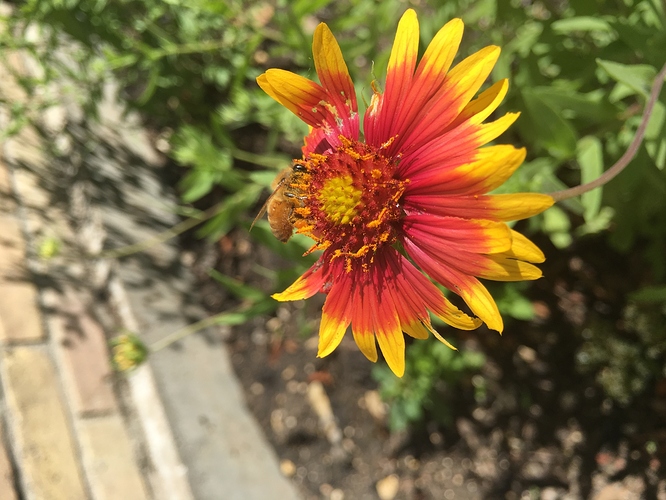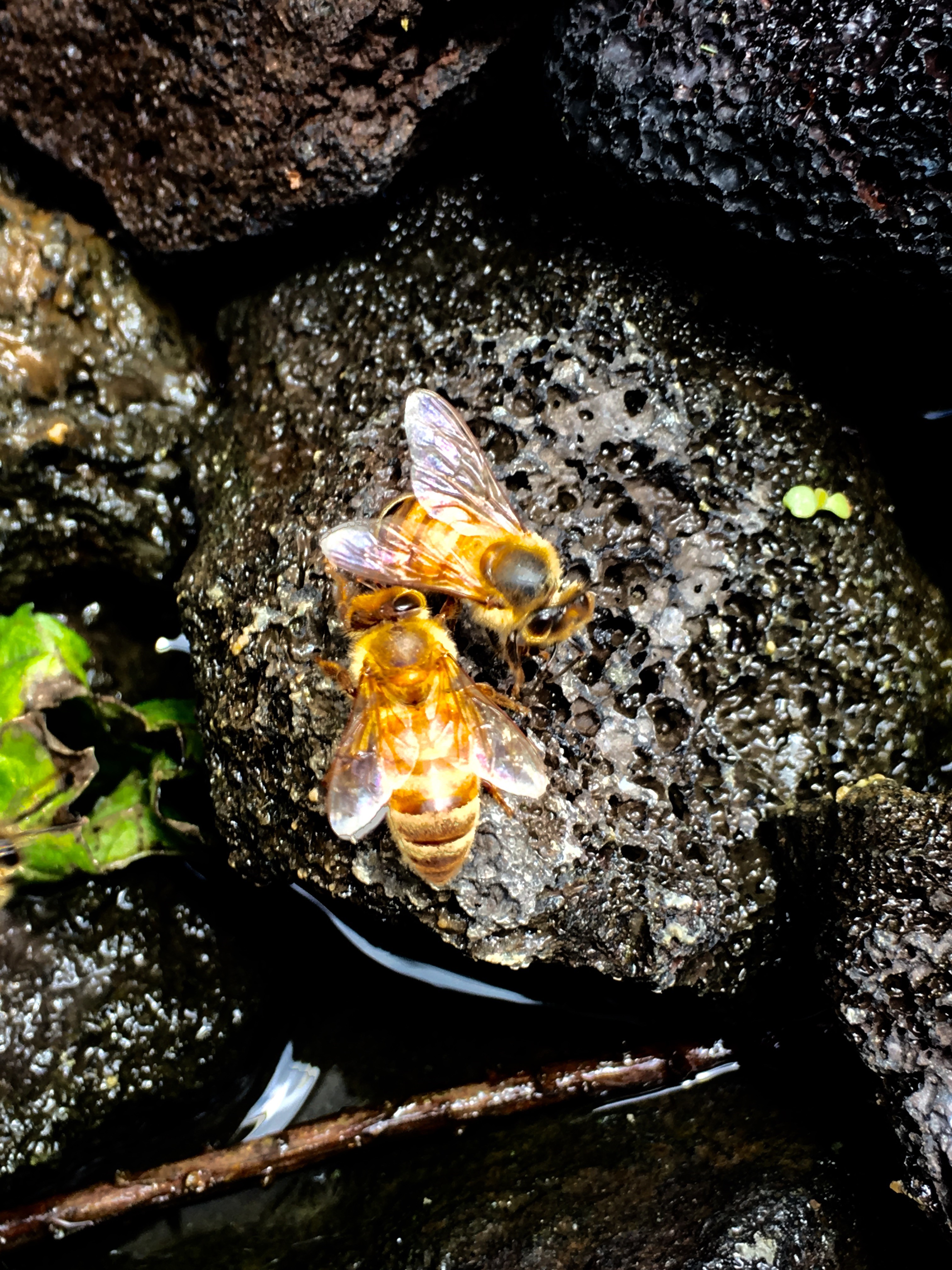Hi Robert, I notice a large area of drone comb on one frame. That is less than ideal if SHB is in your area. I’d be trying to eliminate the large areas of drone comb by using wax foundation.
Not sure on shb in my area. No problems with them yet. Looking for them though. Figured with brand new comb, the queen knew what she needed. There were barely any drones on the nuc frames I got
It’s not the queen that wants the drones, it’s the colony that wants more drones. The queen just lays the eggs. The main part of my shb strategy is to eliminate the large areas of drone comb. You’ll achieve that by using wax foundation. You may not have shb in your area, so you should be right.
SHB aside, you don’t really want to get into the business of supporting a hive full of drones. I can understand the allure of ‘natural comb’ but the reasons that people have persisted with foundation for so long are good ones.
Either way, your bees look productive so you have a great base to start from!
Makes sense keeping the drone cells spread out around the frame. I’ve read plenty of thoughts on drone population control. There’s a ton of different ways beeks do things. Only thing I’ve seen that everyone agrees on is the saying, ask 10 keepers a question and get 12 different answers.
But there is no way of getting away with the fact that bees like drones. They must have more functions than we are aware of. Left to their own devices they can have up to 20% in peak summer.
Studies, one in particular from LASI at Sussex University comes to mind, have shown that drone culling has little impact on varroa numbers either.
I’m not suggesting you do nothing if you have SHB; Jeff’s method of keeping drones down seems to work. In the UK we have the luxury of no SHB…for now
The problem I see with leaving drone comb in brood frames is that you will carry that burden until you cycle the frames out. What the bees decide at the time of the initial drawing out of the comb may not be practical for the longevity of the hive (ie. the life of the frame and it’s many cycles). I personally think having quality brood frames with limited drones are an asset that is worth investing time into from the start. If you have a hive full of drones it’s going to be long journey to full supers.
Your spot on there @RBK . They don’t necessarily want to make drones during Autumn, however the comb will still be in the brood area taking up space that could be better served for worker comb.
Hi Robert, I only heard that saying about ask ten beekeepers a question & get 12 answers since being on this forum. The best answers you’ll get is from your own experience. Lots of new beekeepers ask plenty of questions because they want to “get it right” from the word go. Inevitably mistakes will still be made & things will still not go according to plan. So lessons will be learned in the process.
I know I won’t get it right without personal experience, I’m just picking the brains of the experienced ones. I’ve realized quickly that there’s not a right way. Too many variables for different locatons. Asking only in my area is good for certain things, but this forum has been fantastic for different methods. If everyone around me does it a certain way but I pick up a better method here, we all win. Thanks
That’s for sure Robert, I’ve always been a bit of an individual myself. I’ve never been to any club meetings. I go against the grain if I think it’s better for the bees, or if I think something other people do is a waste of time. I’ll give you an example. When I started beekeeping, I made a heap of lids & bases using marine ply. It worked out perfect if I didn’t give the bees a landing pad. I couldn’t see the point of having one, so I made all my bases flush.
The main thing with beekeeping is to understand bee culture (what the bees do in the wild). Once we understand that, then we can apply that knowledge to our beekeeping practices, irrespective of what climate we’re in.
That’s too bad in some ways Jeff, you have been a great resource on this forum and we can’t even truly sit and pick your brain like we could face to face in a meeting. You could do a lot of good for a club, and for newbees with your experience.
Hi & thank you Adam, I guess I was talking about when I first started. I had 3 mentors at the start. One retired, another one was a queen breeder, actually his son is on the Flow Facebook site, he also breeds queens, his sir name is Covey. The other one was close to retiring, I knew him because he sold a bit of gear. I used to pick his brains every chance I got.
I have some of Coveys genetics in my little bee yard, I do like the caucasion bees, they seem to do well where I am in an urban situation.
Hi Rod, I wondered if anyone local recognized his name. His father Clive, used to breed caucasions. I think the son’s name is John, the one who breeds the queens, I think he took over from his father. Wilma & I knew his brother, George. I bought my first hive from him. George told me a fair bit about bees & I remember how passionate he was whenever he spoke about them.
The name Covey goes back a long way in beekeeping.
Something to cherish Jeff,
I was attending the annual apiarists conference in Albury last week and arranged to meet up for lunch with David Briggs and his father Linton, I am sure you recognise the name (another generational beekeeping family in Australia), they breed caucasions in Glenrowan Vic and they were telling how they sourced some caucasion genetics from the Covey’s many years ago and remain in contact. its a small world in beekeeping.
Wow, yes it is Rod. No I’ve never heard that name, mainly because I’ve always kept bees in Qld. The only other name I heard outside Qld. was Rice. A bloke used to tell me all the time about the queens he used to get from Rice, in Victoria I think.
Just a snap I took yesterday
Sorry to top of screen out walking with my client by the canals where Stratford and Grand Union Canals meet
Here are some photos I took last night from the end of the flow frame, more and more bees are on the frames. Looking at the side view window I did not take a photo because you could not see the frame. There were actually nothing but bee bodies everywhere 
The other set of photos is using the Flir thermal camera, the 1st set was taken on May 5 the day after I added the flow frames. The last image was taken this morning, about 60° out. The best time to take thermal imaging photos is when there is a contrast in temperature. Thus why I take it early in the morning. I can see it, others may not but there is definitely more warmth being generated in the flow frame box as time progresses.







